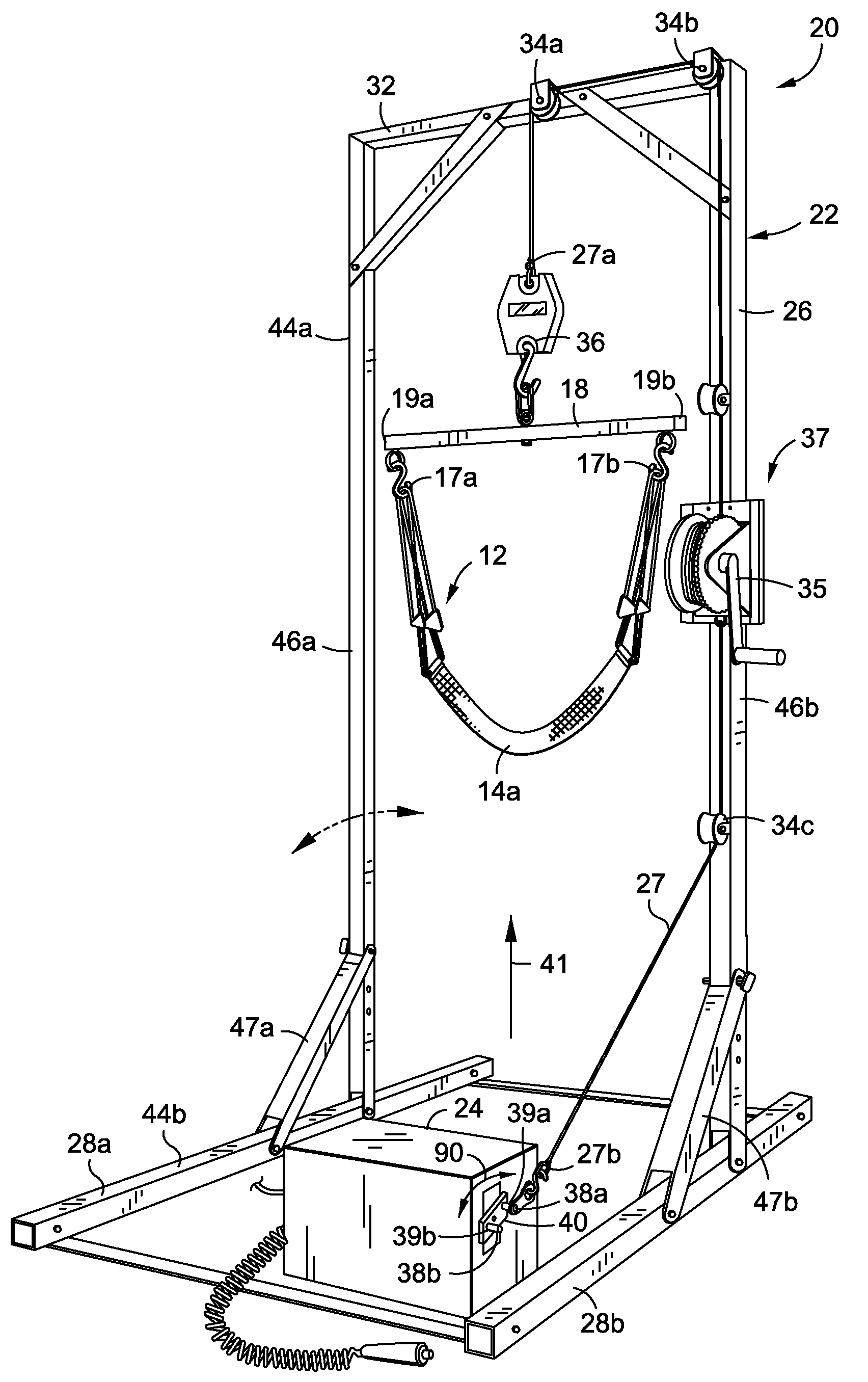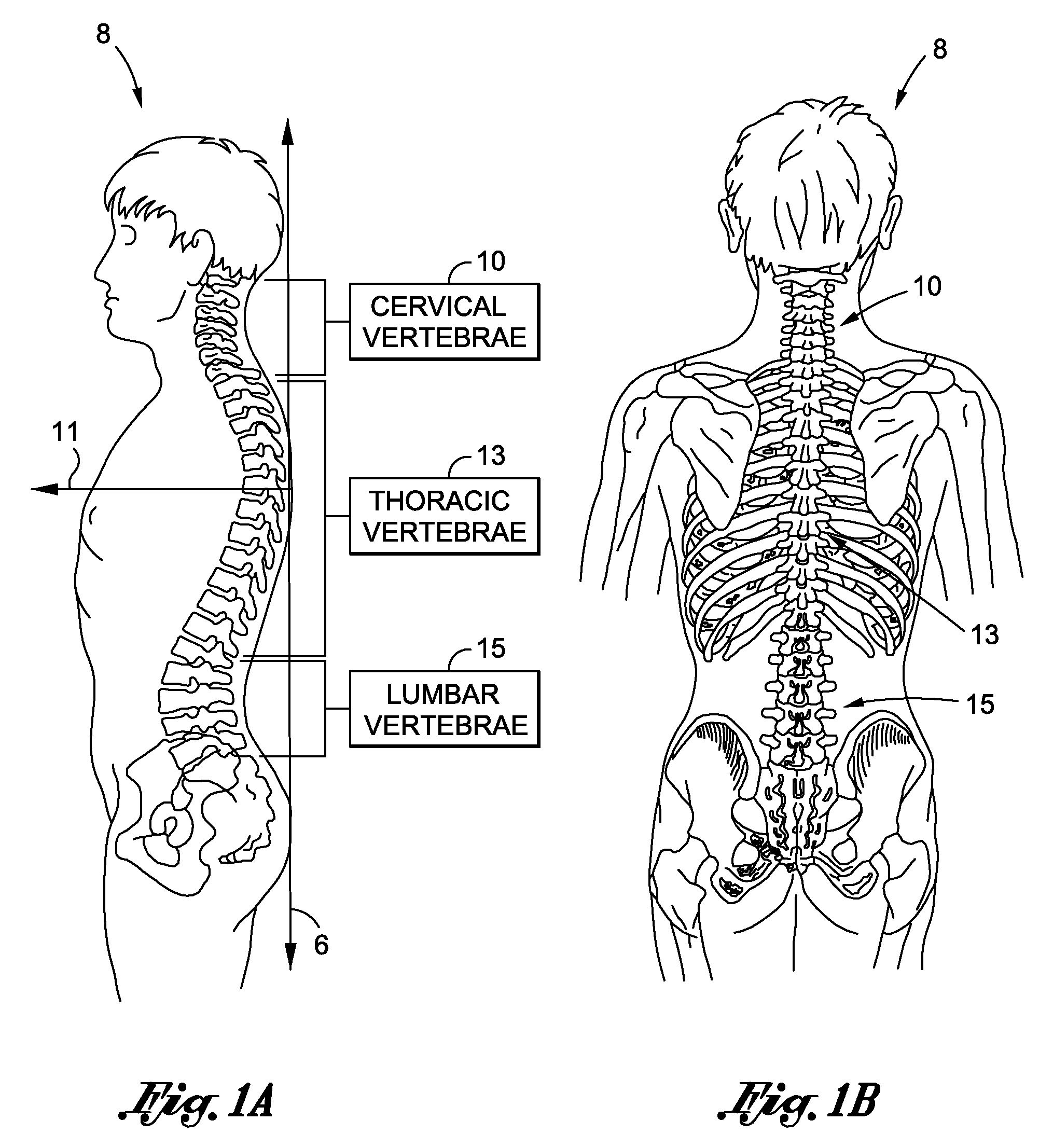Intermittent lumbar traction apparatus and method
a lumbar traction and lumbar technology, applied in the field of lumbar traction apparatus and method, can solve the problems of severe reducing and impairing the quality of life, disabling such individuals, and not being suitable for patients with hypolordosis, and achieves the effects of reducing symptoms, restoring curvature of the region, and increasing range of motion
- Summary
- Abstract
- Description
- Claims
- Application Information
AI Technical Summary
Benefits of technology
Problems solved by technology
Method used
Image
Examples
Embodiment Construction
[0026]The detailed description set forth below is intended as a description of the presently preferred embodiment of the invention, and is not intended to represent the only form in which the present invention may be constructed or utilized. The description sets forth the functions and sequences of steps for constructing and operating the invention. It is to be understood, however, that the same or equivalent functions and sequences may be accomplished by different embodiments and that they are also intended to be encompassed within the scope of the invention.
[0027]It has been discovered that the application of an intermittent traction load can be used to enhance traction of the lumbar region 15 of the spine 8. The application of the intermittent traction load increases invertebral separation and patient comfort thereby increasing the effectiveness of the traction. This should reduce the duration and frequency of lumbar traction sessions necessary to restore a more normal thoraco-lu...
PUM
 Login to View More
Login to View More Abstract
Description
Claims
Application Information
 Login to View More
Login to View More - R&D
- Intellectual Property
- Life Sciences
- Materials
- Tech Scout
- Unparalleled Data Quality
- Higher Quality Content
- 60% Fewer Hallucinations
Browse by: Latest US Patents, China's latest patents, Technical Efficacy Thesaurus, Application Domain, Technology Topic, Popular Technical Reports.
© 2025 PatSnap. All rights reserved.Legal|Privacy policy|Modern Slavery Act Transparency Statement|Sitemap|About US| Contact US: help@patsnap.com



